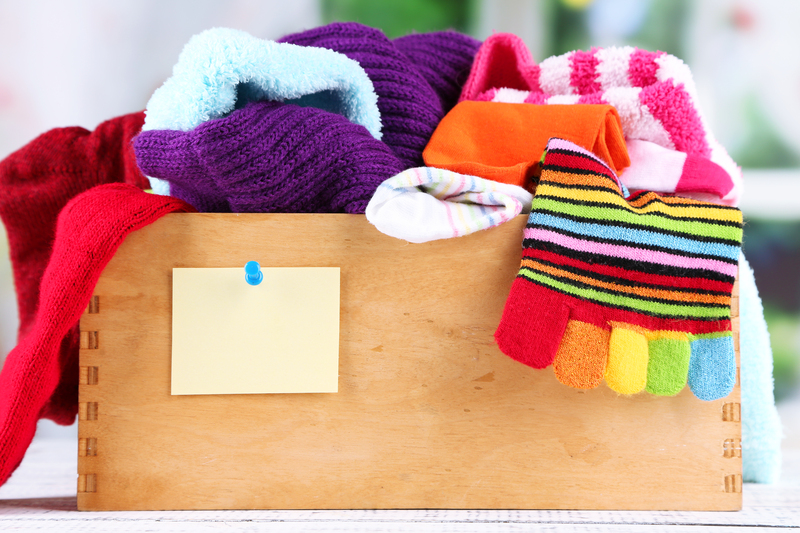Spotlight on Freshness: Carpet and Hard Floor Cleaning Techniques
Posted on 29/08/2025
Spotlight on Freshness: Carpet and Hard Floor Cleaning Techniques
Nothing invigorates a space quite like a freshly cleaned floor. Whether it's the plush comfort of carpeting or the sleek appeal of hardwood, tile, or laminate, fresh floors can completely transform your environment. In this in-depth guide, we shine a spotlight on the best practices, tips, and modern solutions for achieving pristine, hygienic floors, focusing on both carpet and hard floor cleaning techniques. Embrace the power of cleanliness and learn how to maintain your floors for years to come!
Why Fresh Floors Matter: Health, Longevity, and Aesthetics
- Health: Fresh floors help reduce allergens, dust, and bacteria--contributing to healthier indoor air.
- Longevity: Regular cleaning extends the life of your carpets and hard surfaces, protecting your investment.
- Appearance: Nothing compares to the look and feel of a sparkling clean floor--whether you have lush carpet or sleek hardwood.
Ready to transform your home or office? Discover the ultimate carpet and floor cleaning methods that guarantee not just cleanliness but also lasting freshness.

Understanding Different Floor Types and Their Cleaning Needs
No two floors are exactly alike. Each surface demands tailored cleaning approaches to preserve its best qualities:
- Carpets: Varieties include cut pile, loop pile, wool, synthetic and blended fibers, each with unique cleaning requirements.
- Hardwood: Natural wood floors need gentle products and precise techniques to avoid scratches and water damage.
- Tile and Grout: Ceramic, porcelain, and stone tiles with porous grout lines can harbor grime and bacteria.
- Laminate & Vinyl: Durable options sensitive to excess moisture and harsh chemicals.
Let's dive deeper into the specifics of carpet cleaning methods before turning our attention to hard floor techniques.
Carpet Cleaning Techniques: Bringing Plush Freshness Back
Vacuuming: The First Line of Defense
Consistent vacuuming is the easiest way to maintain carpet freshness. Aim to vacuum once or twice weekly, and more often in high-traffic zones or if you have pets.
- HEPA-filter vacuums help trap allergens.
- Proper technique: Overlap passes and use slow, deliberate strokes for maximum particle removal.
- Attachments: Don't forget edges, corners, and beneath furniture.
Spot Cleaning Stains and Spills
Accidents happen. The key is immediate action:
- Blot, don't rub! Use a clean, white cloth to absorb as much liquid as possible.
- Rinse with cold water and blot dry.
- DIY Solution: Mix one tablespoon of dishwashing liquid and one tablespoon of white vinegar into two cups of warm water. Apply, blot, and repeat as necessary.
- Commercial carpet stain removers: Choose formulations appropriate for your carpet type.
- For stubborn stains (wine, coffee, pet accidents), a professional cleaner may be required.
Deep-Cleaning Carpets: Methods for a Thorough Refresh
While vacuuming and spot cleaning are vital, carpets benefit from periodic deep cleaning for true freshness:
Hot Water Extraction (Steam Cleaning)
- The gold standard for deep carpet cleaning
- Machines inject hot water and cleaning solution deeply into fibers, then extract it along with embedded dirt.
- Ideal for allergy sufferers and homes with pets.
- Drying time varies (4-24 hours); ensure good air circulation.
Dry Carpet Cleaning
- Involves cleaning compounds or powders sprinkled onto the carpet, agitated, then vacuumed.
- No lengthy drying time: Excellent for busy households and areas that must remain in use.
- Choose only products safe for your specific carpet material.
Encapsulation Cleaning
- Low-moisture technology applying polymer detergents that encapsulate dirt.
- Dried residue is easily vacuumed away.
- Eco-friendly and quick-drying.
Bonnet Cleaning
- Popular for commercial environments--uses a rotating absorbent pad soaked in cleaning solution.
- Best as an interim solution; does not deeply clean fibers.
Professional Carpet Cleaning vs. DIY: What's Best?
- DIY carpet cleaning machines: Readily available, affordable, and good for maintenance between professional cleanings.
- Professional service: Highly recommended annually or semi-annually, especially for homes with kids, pets, or allergy sufferers. Professionals use commercial-grade equipment and expertise for the deepest results.
Tips to Keep Your Carpet Fresher, Longer
- Use doormats at all entrances to reduce dirt tracked inside.
- No shoes indoors policy significantly reduces wear and dirt.
- Use carpet protectors under furniture to prevent crushing and stains.
- Implement a regular rotation of furniture to avoid worn pathways.
Hard Floor Cleaning Techniques: Shine and Sanitize Hardwood, Tile & More
Hardwood Floor Cleaning Tips: Protecting Natural Beauty
Wood floors are prized for their warmth and elegance--but they require special care.
- Dust mop or vacuum (hard floor setting) daily to remove abrasive debris.
- Damp-mop weekly using a barely damp microfiber mop and dedicated wood floor cleaner.
- Avoid excessive water: Never allow standing moisture, which can damage or warp wood.
- Place felt pads under furniture legs.
- Manage humidity levels (ideally between 35%-55%) for floor stability.
Dealing with Spots and Spills on Wood Floors
- Wipe up immediately with a dry or slightly damp cloth.
- Never use harsh chemicals, vinegar, or steam mops--these can strip finish and dull shine.
- Deep cleaning: Use products specifically labeled for hardwood, and buff with a soft, clean towel.
Rejuvenating Dull Hardwood Floors
- If your floors look cloudy or worn, a floor renewal product (approved by your manufacturer) can restore luster.
- Professional refinishing: Consider every few years for heavily used areas or severe wear.
Tile and Grout Cleaning: Techniques for Lasting Brightness
- Sweep or vacuum thoroughly before wet cleaning.
- Use a pH-neutral cleaner or a solution of warm water and a few drops of dish soap for routine mopping.
- Do not use bleach or ammonia on colored grout as it may cause discoloration.
Banishing Grout Stains
- Mix baking soda and water into a paste; apply to grout lines and scrub with a stiff brush.
- Rinse thoroughly and dry.
- For persistent stains, a grout sealer or professional cleaning may be needed.
Laminate & Vinyl Floor Cleaning: Simple but Effective
- Dry sweep or vacuum: Always use a soft brush attachment or dedicated hard floor vacuum.
- Damp mop using a laminate/vinyl-safe cleaner: Avoid standing water, which can cause buckling or lifting.
- Never wax or polish modern laminate or vinyl flooring as this may cause residue or damage.
Modern Innovations in Floor Cleaning
Keeping your floors spotless is easier than ever with innovative tools, green products, and smart scheduling. Here are some of the latest trends making waves in the carpet and floor cleaning world:
- Robotic Vacuums: Efficient for daily dirt removal from both carpet and hard floors.
- Eco-Friendly Products: Plant-based cleaners minimize allergens, fumes, and ecological impact.
- Microfiber Mops: Pick up more dust and debris while using less water and chemicals.
- Steam Mops: (For tile and sealed hard floors) Sanitize and clean quickly with minimal residue.
Common Carpet and Floor Cleaning Mistakes--and How to Avoid Them
- Overwetting carpets: Excessive moisture can lead to mold and mildew problems--use minimal water and allow for thorough drying.
- Using the wrong product: Always read labels. Improper chemicals can strip finishes, cause discoloration, or void warranties.
- Ignoring high-traffic areas: Clean these areas more often to prevent excessive wear and soiling.
- Skipping routine cleaning: Consistency is key! Prevent buildup for easier long-term maintenance.
Natural and DIY Floor Cleaning Solutions
For those who prefer natural or homemade options, try these effective recipes:
- Carpet Freshener: Mix equal parts baking soda and cornstarch. Sprinkle over carpet, let sit for 30 minutes, and vacuum thoroughly.
- Tile Cleaner: Combine 1/2 cup vinegar, 1 gallon warm water, and a few drops essential oil for scent.
- Wood Floor Polish: Mix one part olive oil to 10 parts lemon juice or vinegar. Apply sparingly with a cloth, then buff dry.
Always spot-test any DIY solution on a hidden area before full application.
How Often Should You Clean Your Carpets and Floors?
- Carpets: Vacuum 1-2 times weekly; spot clean as needed; deep clean every 6-12 months.
- Hardwood: Sweep daily; damp mop weekly; polish annually or as needed.
- Tile: Sweep/vacuum weekly; mop every 1-2 weeks; clean grout monthly.
- Laminate/Vinyl: Sweep/vacuum weekly; damp mop every 1-2 weeks.

Professional Floor Cleaning: When to Call the Experts
While routine care keeps floors looking good, certain situations call for expert intervention:
- Persistent stains or odors in carpet
- Water damage or mold issues
- Restoring worn or extensively scratched hardwood
- Deep grout stains or tile discoloration
Professional cleaners have access to industrial equipment and specialized knowledge--invaluable for optimal results.
Conclusion: Shine a Lasting Spotlight on Your Floors' Freshness
Whether you have carpets that crave plush softness and bright colors or hard floors seeking a spotless, luminous glow, the right cleaning methods make all the difference. By understanding your floor's unique needs and adopting a mix of daily, weekly, and deep-cleaning habits, you preserve not only beauty but also the health and value of your space.
Keep this comprehensive guide as your go-to reference for carpet and hard floor cleaning techniques. Invest a little time, use the right products and tools, and enjoy the benefits of floors that look, feel, and smell remarkably fresh--every day. Let your home or business stand out with cleanliness that truly shines!




